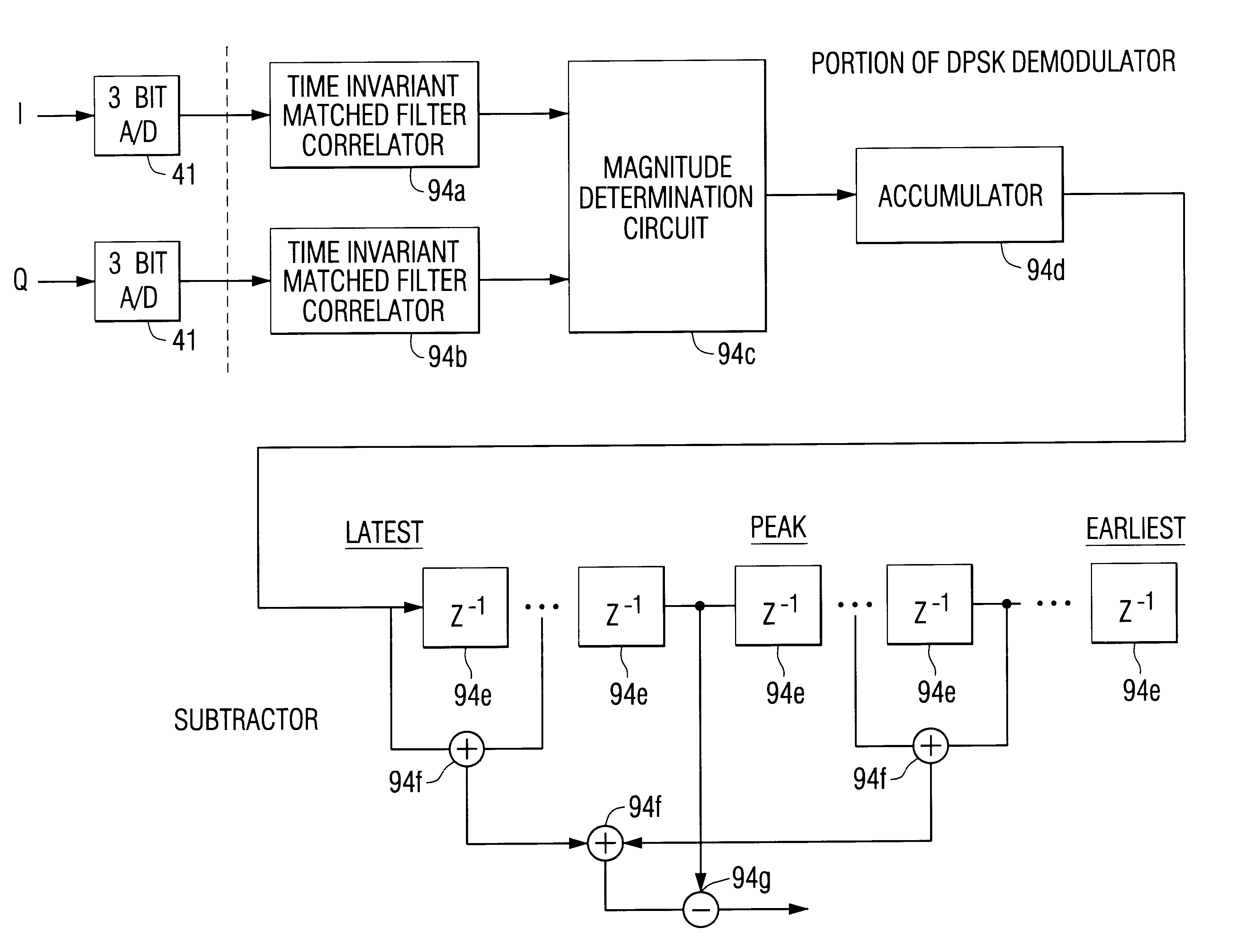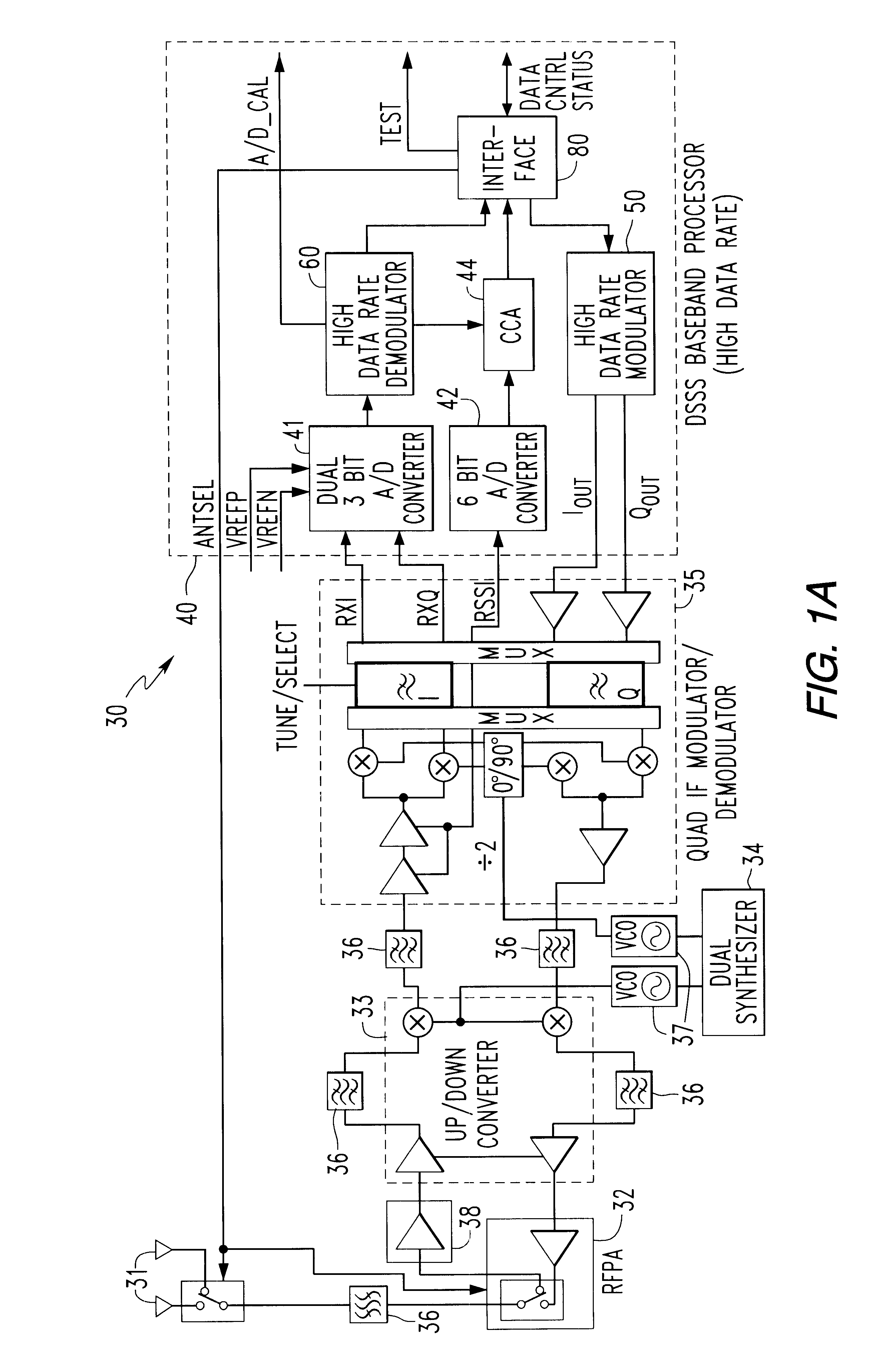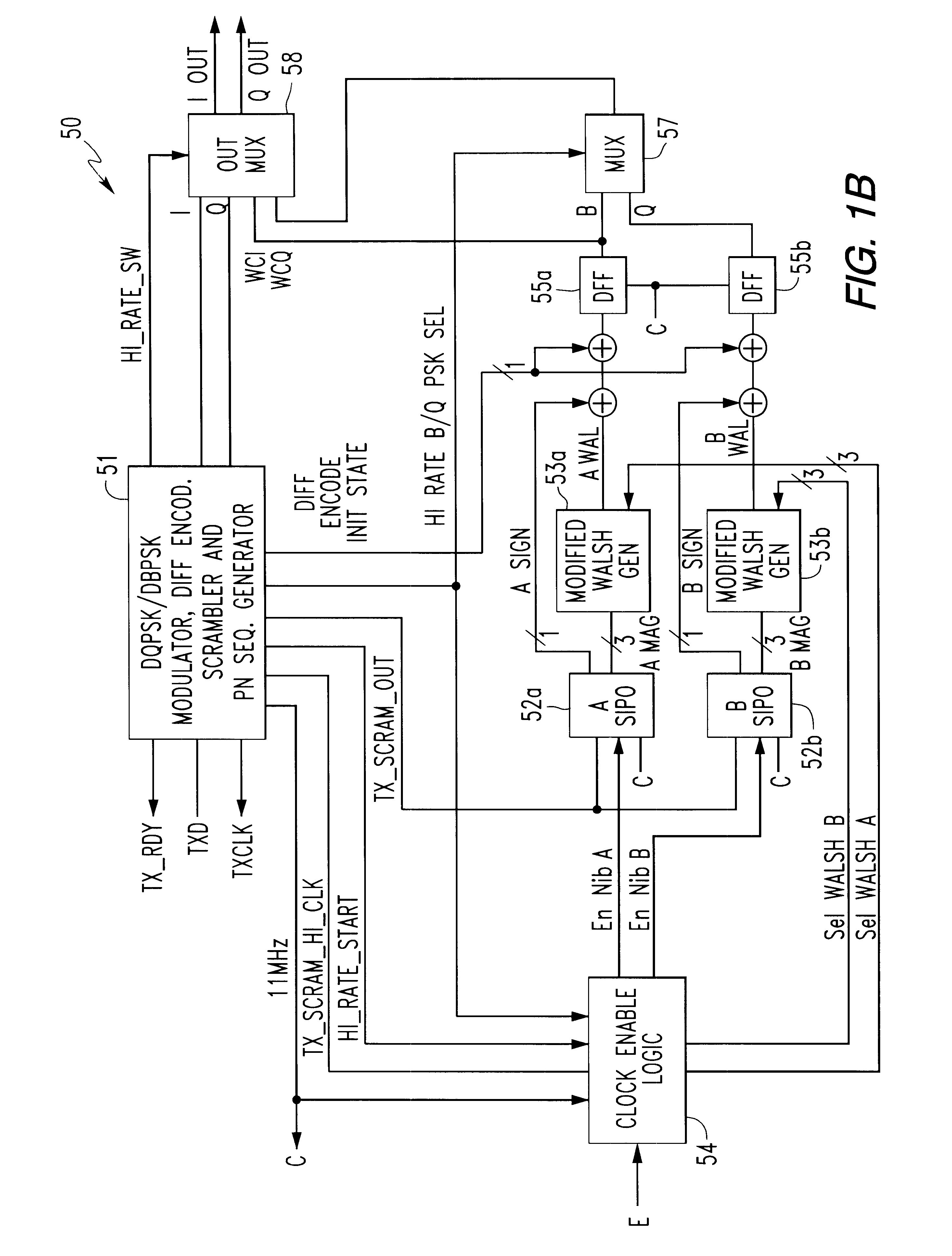Method of performing antenna diversity in spread spectrum in wireless local area network
a technology of spread spectrum and antenna diversity, which is applied in the field of performing antenna diversity in spread spectrum in wireless local area network, can solve the problems of not being signal may not be the best signal element, and the algorithm using an snr to obtain the-highest signal may not be the best, etc., to achieve good diversity selection metric, improve diversity scheme performance, and increase energy
- Summary
- Abstract
- Description
- Claims
- Application Information
AI Technical Summary
Benefits of technology
Problems solved by technology
Method used
Image
Examples
Embodiment Construction
of FIG. 31 requires FF weight calculation before the FB weights can be computed.
Using the zero-forcing (ZF) criterion, two FF weights can be solved using the matrix shown in FIG. 32. Once the channel impulse response is known, the coefficient matrix is known. Simple inversion gives the result. The two FF weights and the w.sub.1 and w.sub.0 solution is simply h.sub.1 and ho scaled by the same complex constant. Solving for 3 FF taps is similar.
Once the FF weights have been calculated, the FB taps are derived by convolving the channel impulse response with the FF weights. The trailing taps in the output convolution become the FB taps.
To vary complexity, a designer decides how many taps are needed to obtain a desired level of performance. These options are illustrated by using only FB taps, using only 2 FF taps, and using 3 FF taps. The number of FB taps is varied in each case.
The architecture and performance for a DFE, which uses only FB taps, is shown in FIG. 33. For a QPSK signaling ...
PUM
 Login to View More
Login to View More Abstract
Description
Claims
Application Information
 Login to View More
Login to View More - R&D
- Intellectual Property
- Life Sciences
- Materials
- Tech Scout
- Unparalleled Data Quality
- Higher Quality Content
- 60% Fewer Hallucinations
Browse by: Latest US Patents, China's latest patents, Technical Efficacy Thesaurus, Application Domain, Technology Topic, Popular Technical Reports.
© 2025 PatSnap. All rights reserved.Legal|Privacy policy|Modern Slavery Act Transparency Statement|Sitemap|About US| Contact US: help@patsnap.com



